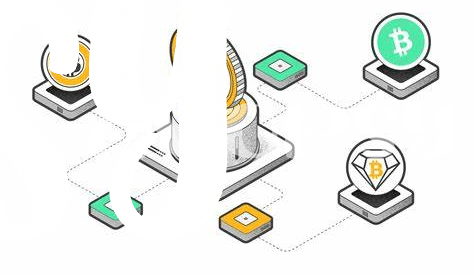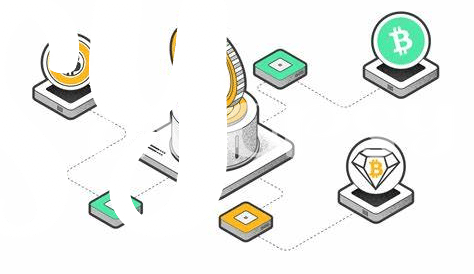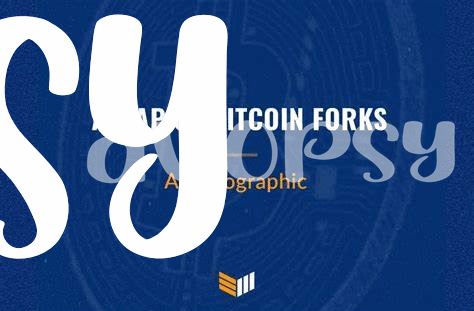🌍 Exploring the Universe of Blockchain Forks

Diving into the world of blockchain is like exploring a vast cosmos, where forks play the role of stars charting new courses in the sky. Essentially, a fork happens when there’s a change or an upgrade in a blockchain’s protocol, leading to two paths: one that sticks to the original rules and another that ventures off with new rules. It’s a bit like deciding to take a different hiking trail because you think it might offer a more scenic view or a shortcut. This universe is ever-expanding, with each fork introducing its own set of innovations and possibilities. They’re not just technical tweaks; they represent new opportunities for growth, adaptation, and even the birth of entirely new blockchain systems. From simply speeding up transactions to enabling completely new functionalities, forks are the unsung heroes reshaping the boundaries of blockchain technology.
| Type of Fork | Purpose | Example |
|---|---|---|
| Hard Fork | To create significant changes or improvements | Bitcoin Cash from Bitcoin |
| Soft Fork | To implement minor updates or corrections | Segregated Witness (SegWit) in Bitcoin |
💡 Understanding Forks: Splits That Spark Innovation
In the world of technology, picture blockchain as a digital ledger book that stores all transactions of a cryptocurrency. Now, imagine some people want to add new features or improve the rules of this ledger book; this is where “forks” come into play. Think of it as taking the original recipe of a cake (blockchain) and deciding to make two versions: one might have chocolate chips (a new blockchain with added features) and the original recipe. This process of creating a fork can lead to incredible innovation within the blockchain community. It’s like a brainstorming session that never ends, bringing to life new ways of using blockchain that we may not have considered before. For instance, with the advent of forks, we can see the birth of new cryptocurrencies or even entirely new frameworks for existing ones, each tailored to solve unique problems. Notably, the benefits of these innovations reach far and wide, extending even to how securely we can store our digital currencies. For a deeper dive into how technology continues to redefine secure transactions and storage in the crypto world, check out an interesting piece on comparing top bitcoin cold storage methods in 2024, https://wikicrypto.news/ai-and-cryptocurrency-shaping-the-future-of-bitcoin-transactions. Through forks, the blockchain ecosystem constantly evolves, pushing the boundaries of what’s possible and ensuring the technology remains at the forefront of digital innovation.
🚀 Major Forks of 2024: What Changed?

In 2024, the world of blockchain saw a series of key changes, primarily through the emergence of forks that ushered in fresh perspectives and capabilities. Imagine these forks as paths in a vast forest; previously, there was one main path everyone followed, but now, several new paths have branched off, leading explorers to different destinations. These forks weren’t just minor tweaks; they represented significant shifts, introducing new features that enhanced security, improved transaction speeds, and even reduced the energy consumption of blockchains, making them greener and more sustainable. Among these transformations, some forks aimed at increasing the inclusivity and fairness of the blockchain, ensuring that more people could participate and benefit from its technologies. Others focused on expanding the functionality of blockchains, turning them into more than just platforms for cryptocurrency exchanges; they became foundational technologies for a wide range of applications, from secure voting systems to transparent supply chains. This evolution marked a milestone in the blockchain saga, demonstrating how flexibility and innovation could propel the entire field forward, all the while encouraging a broader conversation among the global community about the future direction of blockchain technology.
🛠 How Forks Are Shaping New Blockchain Uses

Imagine walking into a world where the very foundations of blockchain technology are evolving right before our eyes, creating a playground for innovation and new applications. This magical shift is largely thanks to the phenomenon of blockchain forks, which, far from just creating divergent paths, are actually paving new highways of opportunity. These forks, or splits in the blockchain, are more than just technical hiccups; they’re deliberate changes that introduce fresh features or address existing issues. Think of them as major updates on your smartphone that bring in new functionalities you never knew you needed. In 2024, these forks are not just adjustments; they’re transforming the landscape by enabling entirely new uses for blockchain technology. From enhancing security measures to introducing novel ways of managing digital identities and assets, the possibilities are becoming limitless. Thanks to these innovations, sectors like finance, healthcare, and even the arts are beginning to see blockchain in a new light, harnessing its power for more than just cryptocurrencies. It’s like opening a treasure chest of opportunities where each fork leads to undiscovered gems. This evolution is also ushering in a paradigm shift in how we view bitcoin cold storage methods in 2024, pushing the boundaries of what’s possible and securing a place for blockchain in the future of technology.
📈 the Impact of Forks on Blockchain Stability
When we talk about forks in the blockchain world, think of them as updates in your favorite video game or a new twist in your favorite book series. They’re not just changes; they offer fresh starts and new chapters. In 2024, these forks have become key players in the blockchain game, influencing how stable and robust these digital chains are. It’s kind of like adding more lanes to a busy highway; traffic (or in blockchain terms, transactions and activities) flows better, and there are fewer jams. This improved flow isn’t just about speed; it’s about making the whole system more reliable. People start to trust it more because it works well, even when there are lots of users or big transactions.
However, it’s not all rainbows and sunshine. With every fork comes a period of adjustment. Think of it as the initial chaos in rearranging a busy room to make it more spacious. During this time, the blockchain can seem a bit shaky. Developers and users are in a dance of adaptation, figuring out how to best use these new changes. But history has shown us that, eventually, stability is enhanced. This journey toward stability is a collective effort, bringing together brilliant minds and enthusiastic users, all aiming for a blockchain that’s not just sturdy but also more inclusive and democratic. Here’s a simple way to see the impact:
| Before Forks | After Forks |
|---|---|
| 🚦Potential Bottlenecks | 🛤 Smoother Transactions |
| 🔒 Limited Use Cases | 🔨 New Possibilities Unlocked |
| 🧐 Skepticism | 🤝 Increased Trust |
This table gives a snapshot of how forks have turned potential roadblocks into highways of opportunity, broadening the horizon of what blockchain can do.
🤝 Forks and Community: a New Era of Collaboration

In the vibrant landscape of blockchain technology, forks have traditionally been viewed as points of contention, marking moments where communities diverge on their path forward. However, as we’ve seen throughout 2024, a dramatic shift has occurred. These splits no longer signify just division; rather, they have blossomed into powerful platforms for collaboration and innovation, steering the blockchain community into a new era of unity and shared purpose. Imagine two groups, each with their own vision for a project’s future, deciding to go separate ways. Instead of parting on bad terms, they leverage this divergence as a crucible for creativity, exploring different avenues that, surprisingly, lead them to cross paths again, enriched and with new insights that benefit the broader ecosystem. This synergy has been particularly noticeable in areas where bitcoin and artificial intelligence in 2024 intersect, showcasing a unique blend of financial inclusion and tech innovation. Similarly, projects centered on bitcoin and financial inclusion in 2024 have thrived, benefiting from the fresh perspectives that these forks facilitate. It’s a testament to the blockchain community’s resilience and willingness to adapt, proving that even in division, there’s a valuable opportunity for growth, learning, and, ultimately, reconnection on grounds that are richer and more inclusive than ever before.
